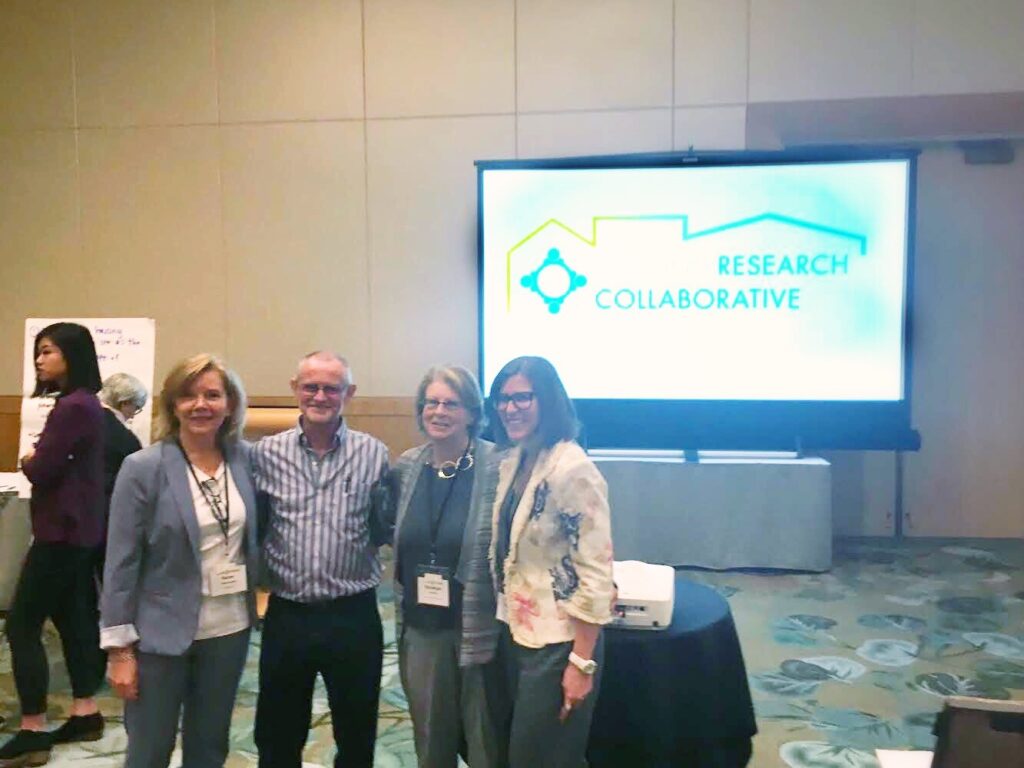Does it ever feel like the housing affordability crisis is here to stay? And that there is little hope for households to be able to afford decent housing?
Turns out there is hope, and we at the Housing Research Collaborative (HRC) had a session at the 2019 BC Land Summit where we introduced to the public three innovative partnerships in affordable housing that are making a difference. Our expert panelists Karen Hemmingson, Ric Mathews, and Tiffany Duzita were in charge of the presentations.
Many complex elements have aligned in recent years to set up the conditions for this crisis. A continuous increase in the disparity between prices and wages and even the global market crash of 2008, can be taken into account when examining the crisis in BC. And yet, there is not much we can do about these.
However, some elements particular to BC’s housing market can, in fact, be addressed. Local governments and non-profit and private organizations can act on the challenges that the real state industry faces and the impediments in the housing delivery system. That’s where partnerships for affordable housing come into play.

What has been done?
Case 1: Community Land Trust
This locally-based non-profit organization, the Community Land Trust Foundation of BC, has an interesting model for partnerships based on Community Land Trusts (CLT). CLTs acquire and hold land for the benefit of the community, making them perpetually available for affordable housing. They achieve this by separating the value of the land from the building on it and removing it from the private real estate market.
CLTs undertake development or redevelopment projects. The resulting units are managed as part of a real estate portfolio, that increases efficiency in the development and operational stages and enables cross-subsidization from higher rent units to lower-end market units across the portfolio.
Community Land Trust’s portfolio has been rapidly increasing in the last few years thanks to large municipal and community partner investments. In 2017, their portfolio had 275 housing units, in 2018, 1681, and they are expecting to have over 2600 by the end of 2019. Furthermore, it is important to note that the Community Land Trust is not the only organization using this model of partnerships in BC, which means that many more units are being made available for affordable housing.
Case 2: HousingHub
HousingHub is a program developed by the Province of British Columbia to increase the supply of affordable housing for middle-income earners (households with average incomes between $50,000-$100,000) who have been priced out of the housing market. Through this program, the province establishes partnerships with private firms, non-profits, and other government agencies to fund housing projects for both rental and purchase, under innovative approaches.
The program aims to identify the communities that need these kinds of investments the most, resulting in unique collaborations for each community, finding ways to best utilizes the partners’ strength according to each case.
Case 3: Inclusive Communities of Care
Inclusive Communities of Care promote a change in the way communities interact with their members. Traditionally, societies have developed in a way that results in the progressive and systematic exclusion of those who don’t fit in a mainstream community due to mental health, addiction, or other issues despite the implementation of containment and management strategies.
This new approach encourages communities to develop characteristics that allow these excluded individuals to become active members of their environments by creating a sense of belonging instead of tolerance and “family” relationships instead of “care-giver” relationships.
What are the biggest challenges for partnerships?
After the presentation of these three cases, we engaged participants in the audience with a facilitated discussion about partnerships for affordable housing. Having participants with diverse backgrounds and areas of focus, allowed us to identify key challenges with a holistic perspective. These are some of the main points that resulted from the discussion:
Engagement Obstacles: Organizations currently face many difficulties to collaborate with homeless people and other groups to produce policies that effectively respond to their unique challenges. This includes the barriers to work along with a broader variety of actors like health institutions in housing projects.
Lack of Governance: In BC, no organization has the responsibility for overseeing and coordinating partnerships. This increases uncertainty among potential partners, elevating their opportunity cost. The absence of an institutional arbitrator often allows that the financial burden turns out inequitably shared among partners, hindering the long-term sustainability of the project.
Lack of Information: There is significant unavailability of precise and organized information about affordable housing partnerships, organizations, and projects. This has undermined the government’s capacity to reach out for financial and technical support from private firms and non-profits.
What should be done to foster partnerships for affordable housing in BC?
Across the discussion tables, many of the ideas addressed the organizational challenges of coordinating information and resources between actors involved in housing-related partnerships. Some key takeaways from the discussion are as follows:
-
There needs to be a centralized institution with a leadership role that coordinates housing efforts from private firms, non-profits, and government agencies. Its functions should include:
- To organize and distribute information;
- To advocate for regulatory changes for affordable housing projects;
- To serve as a matchmaking platform to help organizations find each other to collaborate.
-
There needs to be a way to increase confidence between private firms and non-profits, reducing the perceived risk in investing with these organizations. Some of the recommendations in this regards were:
- Making processes and business models for affordable housing more flexible;
- Making more financial information available;
- Increasing accountability and monitoring of these partnerships
- Provide additional training in partnerships;
- Wider public engagement and information dissemination.
We can see, then, that many of the most important challenges for affordable housing partnerships can be tackled in the short term with decisive actions from the different parties involved. Furthermore, the resulting recommendations from the discussion can be more challenging but yet, they aren’t unattainable either.
As we managed to overcome these barriers, the experience shared here gives us hope that partnerships will progressively have a bigger role in the fight for affordable housing that is inclusive, flexible, and equitable.
